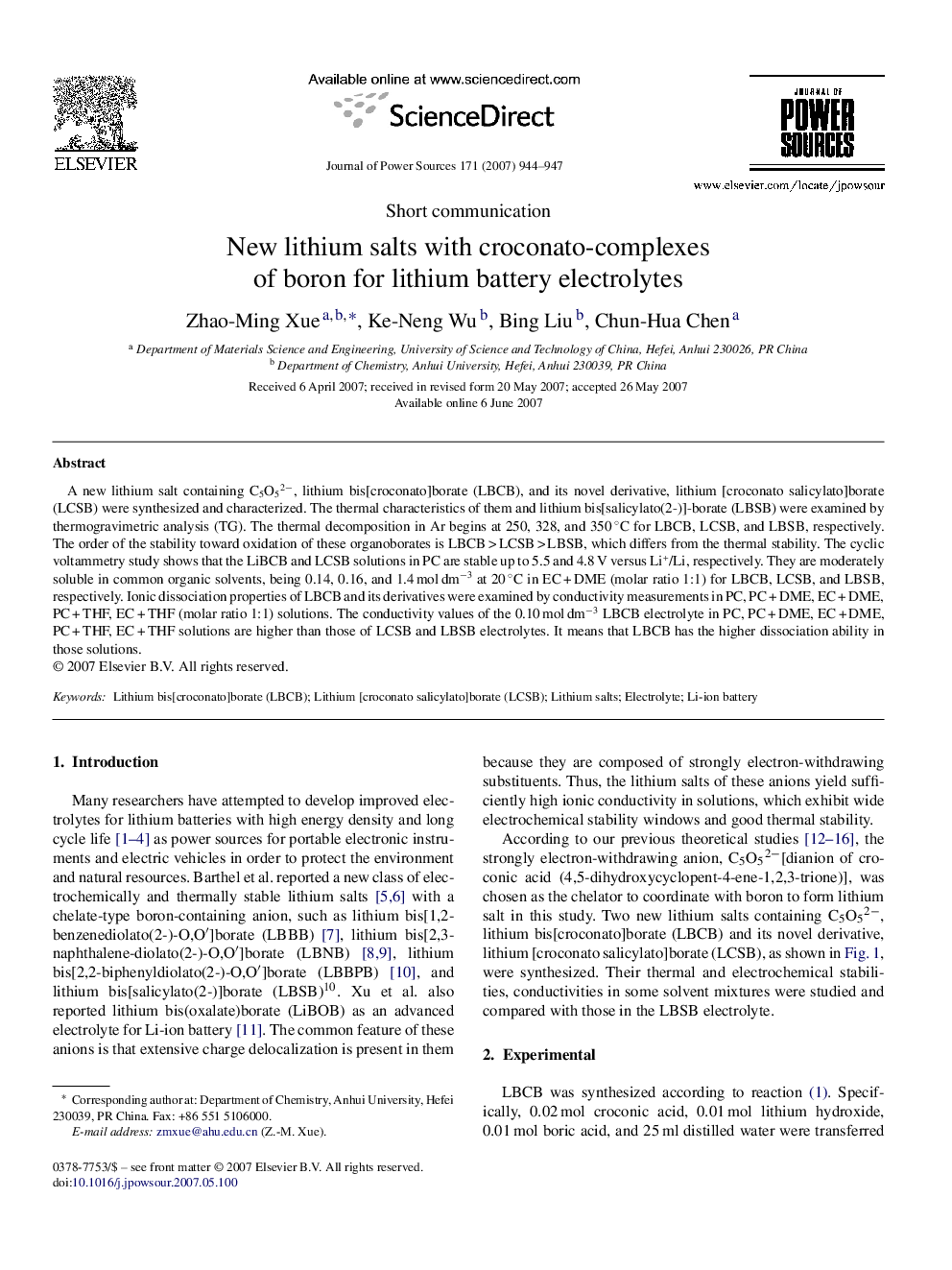| Article ID | Journal | Published Year | Pages | File Type |
|---|---|---|---|---|
| 1286417 | Journal of Power Sources | 2007 | 4 Pages |
A new lithium salt containing C5O52−, lithium bis[croconato]borate (LBCB), and its novel derivative, lithium [croconato salicylato]borate (LCSB) were synthesized and characterized. The thermal characteristics of them and lithium bis[salicylato(2-)]-borate (LBSB) were examined by thermogravimetric analysis (TG). The thermal decomposition in Ar begins at 250, 328, and 350 °C for LBCB, LCSB, and LBSB, respectively. The order of the stability toward oxidation of these organoborates is LBCB > LCSB > LBSB, which differs from the thermal stability. The cyclic voltammetry study shows that the LiBCB and LCSB solutions in PC are stable up to 5.5 and 4.8 V versus Li+/Li, respectively. They are moderately soluble in common organic solvents, being 0.14, 0.16, and 1.4 mol dm−3 at 20 °C in EC + DME (molar ratio 1:1) for LBCB, LCSB, and LBSB, respectively. Ionic dissociation properties of LBCB and its derivatives were examined by conductivity measurements in PC, PC + DME, EC + DME, PC + THF, EC + THF (molar ratio 1:1) solutions. The conductivity values of the 0.10 mol dm−3 LBCB electrolyte in PC, PC + DME, EC + DME, PC + THF, EC + THF solutions are higher than those of LCSB and LBSB electrolytes. It means that LBCB has the higher dissociation ability in those solutions.
